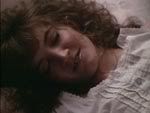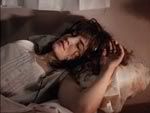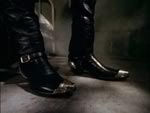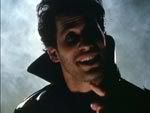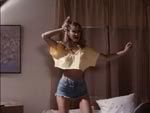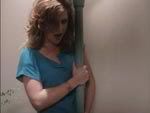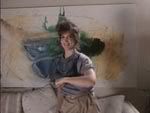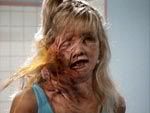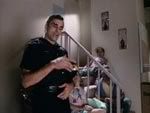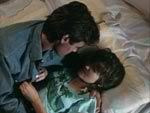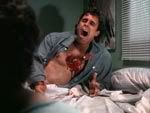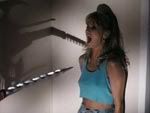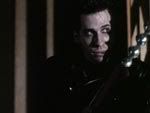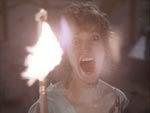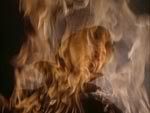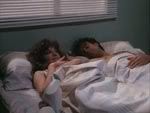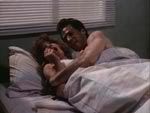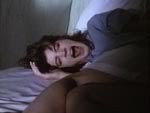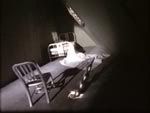There is a theory in Hollywood that the last 10 minutes of a movie are by far the most important for its overall success. The argument goes that a mediocre film can be saved by a memorable conclusion, while a disappointing ending can easily derail an audience’s appreciation of an otherwise great film. The reason for this is simple—many people are linear thinkers who base their judgments solely on their most recent experiential data. Ask them what they thought of a film and they’ll base that judgment on how they felt when they walked out at the end. Even if they sat bored for the first 80 or so minutes, it’s the rush of excitement they remember from the last 10 that will cause them to praise the picture and—vice versa—cause them to denounce a film with an unsatisfactory climax that they otherwise enjoyed.
It is for this reason that any filmmaker who employs the infamous “It was only a dream!” device, no matter how cleverly or innovatively they do so, ultimately dooms their work to popular failure. Over the years audiences have come to think of this ending as a hackneyed rip off and as a result are inclined to revolt against it and any film it appears in—no matter what the context or how it is employed.
The best example of this is the vehement reaction Cameron Crowe’s
Vanilla Sky engendered during its 2001/2002 holiday release. As documented by Chuck Klosterman in his essay “The Awe-Inspiring Beauty of Tom Cruise’s Shattered, Troll-like Face” (from his book
Sex, Drugs, and Cocoa Puffs), audience members walked out of the movie visibly hostile in a way that bore no relation to the quality of the film they just sat through. “…[I]n the parking lot outside the theater, I overheard one guy tell his girlfriend he was going to beat her for making him watch this picture,” he writes in stunned amazement. A well-made film filled with excellent performances (I personally have never found Penelope Cruz more enchanting) that features at least one truly amazing sequence (Cruise’s desperate jog through a deserted Times Square), the reaction the film received ultimately had everything to do with its final few minutes, in which we learn that everything we have seen has been the computer-programmed dream of a man in cryogenic stasis in preparation for his rebirth in an unknown future. Having primed viewers to expect a more complex explanation for its events, the film’s creative variation of “It was only a dream”—alongside its refusal to show the future world it alluded to—alienated viewers to an extreme degree. I strongly suspect that if the Brothers Medved had conducted a poll that year, the movie would have easily made the list of the worst films of all time, even though it wasn’t even the worst film released that particular weekend.
I mention this as a way to explain why the utterly harmless and fitfully amusing sequel to the subject of
my previous DVD Horror Movie Index was only until very recently ranked as one of the IMDb’s Bottom 100 rated movies. Rather than enjoy it as an entertaining—if also occasionally cheesy—comedy nightmare, most people upon seeing it choose to dismiss it as nothing more than a weird/stupid slasher movie with the lamest of all possible endings.
I am, of course, talking about:
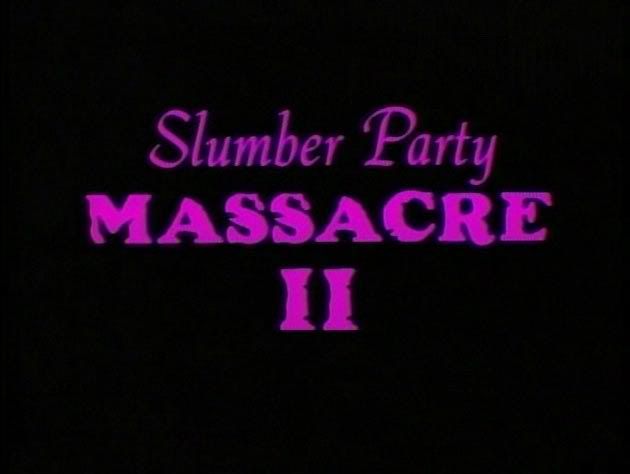
Roger Corman is not the kind of dude to fuck up a good thing. Having made enough of a profit from video and cable revenues to produce a sequel to 1982's
The Slumber Party Massacre, it must have occurred to him that the fact that the film had been made by women might have had a hand in its success, so when it came time to assign the sequel to the sort of starving and desperately ambitious film school graduate upon which he built his low-budget movie empire, it only made sense that in this case this person would also be a female-woman type. After what I'm sure was an exhaustive search, he settled on UCLA grad
Deborah Brock, who had been making no-budget 8mm films since she was a teenager, but had yet to helm an actual feature at that point. But although she shared the same chromosomal makeup and genitalia as Amy Holden Jones and Rita Mae Brown, she came to the project with a different attitude than her predecessors. Her intention in making the film wasn't to--as Brown wanted--to mock the genre or--as Jones successfully did--simply create a highly-effective representation of it, but rather to instead do what they could not and create the first slasher film that effectively represented an entirely female point of view.
(Click any image to enlarge)
To that end she wrote a screenplay that attempted to include all of the necessary slasher movie cliches, but that also explained them away as the nightmarish imaginings of a severely traumatized mind--in this case, Courtney, the 17 year-old version of the 12 year-old girl who survived the events of the first film. Right from the very first shot of our sleeping main character it is clear that what we are going to be seeing isn't a literal representation of a horrific event, but rather the extended dream of a disturbed young woman whose traumatic experiences have left her incapable of willingly making the transition into female adulthood.
In Courtney's dream she imagines herself as an attractive woman (future
Wings star
Crystal Bernard) who is at least 8 years visibly older than her actual age. The same is true for all of her friends (one of whom looks just like 1982's January
Playmate of the Month) and the handsome boy she has a crush on, who looks far more like a 30-something teacher than one of her peers. She and her friends are in a band and though their songs really,
really suck, it is clear that music means something important to her--something deep and intimate that is innately connected to her own nascent sexuality.
(Click any image to enlarge)
We know this because whenever her dream turns nightmarish she is tormented by glimpses of a leather clad psychopath, whose look, cadence and demeanor is that of a 50s era rockabilly performer. And though the identity of this dark, evil Elvis Presley manque is forged by Courtney's love of music, he actually represents her inner sexual conflict. Now a young woman dealing with natural carnal desire, she cannot help but associate the loss of her virginity with the massacre she survived five years earlier, due to the overtly phallic nature of the murderer's weapon of choice. That is why she imagines Val, her now-insane older sister (who also became a lot less attractive in the intervening half-a-decade), urging her from underneath her mental hospital bed to "Don't...go...all...the...way...."
But despite these strong inner fears, Courtney's attraction to the handsome Matt is too powerful to be denied, which is why she invites him to join her at the slumber party being held at her friend Sheila's father's condo.
(Click any image to enlarge)
Now, If there is any validity to the idea that every person you dream of doesn't represent that actual person, but rather an element of yourself that they best exemplify, then Courtney's three friends (and bandmates) can be viewed like this: Sally (
Heidi Kozak) is the self-loathing Courtney feels for not being able to overcome her minor imperfections (ie. the shallow bimbo), Amy (Kimberly McArthur) is the voluptuous symbol of the impossible physical ideal that plagues many women's psyches (ie. the busty centerfold), Sheila (
Juliette Cummins) is the overt expression of Courtney's sexual desire (ie. the exhibitionist slut), while she imagines herself as a near-perfect symbol of purity and innocence, struggling to retain her virtue in a dangerous world (ie. the final girl). Beyond her love of music, she imagines herself and her friends as a band because it allows her to better appreciate them as the cohesive aspects of her own identity and the music they create together allows her to more creatively ponder such ideas as her own personal dissatisfaction and desire for new experiences, which she addresses in a song that asks "Why do you want more?":
It's only a matter of time, though, before Courtney is unable to keep the two separate halves of her dream--the one based in a normal reality and the overt nightmare--from colliding together.
(Click any image to enlarge)
First she dreams of a dead chicken coming back to life in her hands--an incident whose symbolic relevance is lost to me, but could be dismissed as merely one of the random elements that naturally pop up in these unconscious inner narratives. Next she images her bathtub filling up with blood--an obvious allusion to menstruation and the inevitable loss of her girlhood. Most disturbingly she imagines Sally's face transforming into a pus-spewing monstrosity--an image that works to confirm her terror that at the end of the journey through adolescence (Sally spends much of the movie fretting about the kind of nearly invisible facial blemishes that is the bane of many teenagers life experience) there is only disease, ugliness and death.
When the Sally aspect of her identity disappears following the projectile-pus incident, Courtney dreams that she and the others contact the local police (one of whom she--in a nod to her narrative's subconscious state--names Officer Krueger after the famous villain of the similarly dream-inspired Nightmare on Elm Street series). Rather than take her concerns seriously, they question her sanity and berate her for wasting their time--especially when Sally eventually reappears unharmed and without a care in the world. It's clear that there's no help or comfort to be found from the adult world.
(Click any image to enlarge)
It would seem that her only comfort from the terror of her nightmare comes in the arms of Matt (
Patrick Lowe), the symbol of romantic perfection, but as the two of them finally attempt to "Go all the way"--Valerie's dire warning proves entirely wise. With a weapon that grafts a guitar with the electric drill of her previous tormentor, The "Driller Killer" (
Atanas Ilich) penetrates Matt before Matt can do the same to Courtney. The rockabilly killer then proceeds to lay waste to the rest of Courtney's subconscious identities, with superficial Sally being the first to go. Throughout the ordeal it is clear that the killer--and therefore also the young woman responsible for manifesting him--takes a special joy in seeing these less-ideal aspects of her personality die at his hands. This is most obvious when he turns the death of Sheila into a musical number:
Soon only Amy (arguably the least objectionable of her three female aspects) and Courtney remain.
The police express only indifference to Courtney's pleas on the phone for help, so she and Amy have no choice but to escape from the condo and attempt to outrun the mysterious guitar-drill wielding psychopath. Unfortunately, he easily catches up to them and quickly dispatches Amy, leaving Courtney only with the most idealized version of herself to battle against her own fear of personal corruption. For a time it seems as though she is victorious, when she is able to set the Driller Killer ablaze with a blow torch, but her victory is short-lived. No matter how much she wants them to be gone, her aspects cannot be so easily disposed of.
Witness the resurrection of Amy:
(Move pointer over image for full nightmare effect)
(Click any image to enlarge)
Of course this also means the resurrection of Matt, but her fear of sex is too strong to allow him to remain for long and she quickly replaces him with the killer.
(Click any image to enlarge)
The film then ends with the implication that Courtney, not Valerie, was the person driven insane by the experience of the first film, as we see her screaming and tormented on a hospital cot in a dingy unfurnished room, but even this is called into question as it becomes clear that her nightmare hasn't ended as the credits being to roll. This is no "It was all a dream" happy ending, but rather the discomfiting suggestion of a torment without end--a perpetual state of insanity from which its victim, whoever it may be, cannot ever escape.
Viewed this way, Brock's Slumber Party Massacre II is a much more interesting film than it's low IMDb rating and negligible reputation would suggest. The problem, no doubt, is that most viewers come to it expecting another straight-ahead slasher tale in the same mold as its predecessor--thus they are alienated by deliberate choices Brock made that make no sense in that context, but that fit in perfectly with the nightmare narrative she instead chose to pursue. That's not to say the film isn't without its faults (bad acting, low production values, truly terrible music and the utterly inexcusable failure to get Kimberly McArthur naked, considering that her famously copious breasts remained explicitly visible throughout the entirety of her previous three screen credits), but when viewed as a whole and with the right mindset, many of these faults actually work to the film's advantage--making it seem that much more like the dream of young woman (if that is indeed the person who is doing the dreaming) who is familiar with the genre only through its most obvious weaknesses and cliches. It's precisely the kind of narrative tomfoolery that has made David Lynch a cult icon, but without the self-congratulatory pretentiousness that I personally find so alienating in much of his work. For that reason I was surprised and impressed by the film, although I suspect that my admiration for it is definitely going to remain the minority position.
Slasher Movie Statistics
Body Count: 6 (three men and three women)
Instances of Nakedity: 1 (Sadly, not from the playmate)
Instruments of Death: Guitar drill
References to Pot: o (Courtney apparently isn't a subconscious toker)
Amusingly Dated References to 1980s Culture: At their band rehearsal, Sally requests a can of
Slice, while Sheila gets pretentious with some Perrier.
Cinematic Girl Band Comparison: Not as good as: The Carrie Nations or Josie and the Pussycats/Better than: Mystery (from
Satisfaction)
Cheesy References to Other Horror Movies: I already mentioned Officer Krueger, but I didn't mention that his partner is Officer Voorhies.
Utterly Pointless Trivia: Bernard and McArthur both had roles in Garry Marshall's feature film directing debut Young Doctors in Love. As mentioned above, nearly all of McArthur's screen time is spent without a top.
Final Girl Rating: 7 (out of 10)



